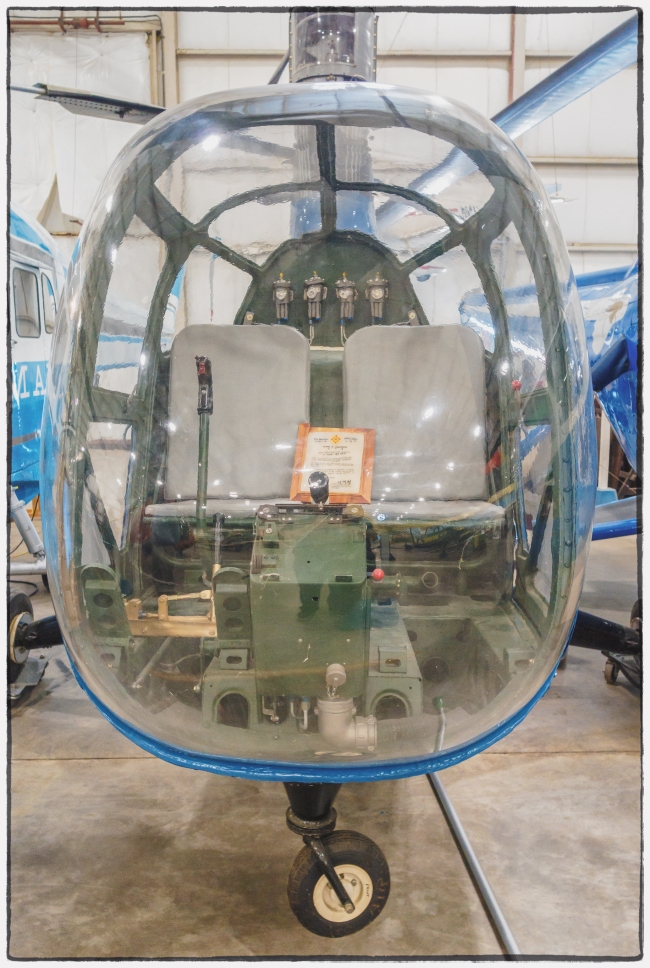According to the Museum’s website (which also provides technical specifications):
Gift of Frank J. Pacheco
Designed and developed by Sikorsky Aircraft and converted to this configuration by Doman Helicopters, this U.S. Army Air Force R-6A is one of about 200 produced by Nash-Kelvinator just before the end of World War II.
The conversion is the work of Glidden Doman who worked on the development of the R-6 at Sikorsky. Doman Helicopters began working in Stratford in 1946, designing a system meant to simplify the rotor head, reduce stress on the rotor blades, and greatly reduce forces on the controls. The Air Force Propeller Laboratory aided the effort by loaning this aircraft, and after the Doman-funded first flights in 1947, contracted a flight test stress measurement program which confirmed the success of the new rotor system.
This hingeless rotor design that was developed is driven by a constant-velocity universal joint making it free to tilt relative to the fuselage without causing any stress or vibratory effects. The blades, increased in diameter by two feet from the standard R-6, are so well balanced that fingertip control forces were enjoyed without any servos. The hingeless rotor concept was adopted by many designers some 40 years later.
Taken with a Sony RX100 M3.

